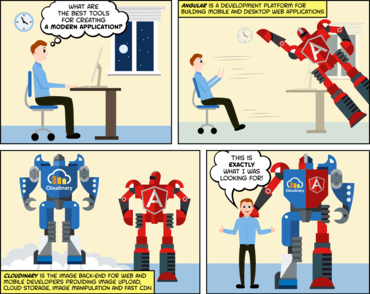Images – if you’re a developer, there’s no doubt that at one time or another, you’ve probably worked with a lot of image files, and may have been tasked with ensuring a top-notch user experience or continually improving website and app performance. You may have posed questions on online message boards, or sought advice from your developer colleagues. But there hasn’t been a conference that solely focused on image management…until now.

Cellular Automata are pretty cool things to play with. There are many, many variants, like Conway’s Game of Life, Abelian Sandpiles, Langton’s Loops and Brian’s Brain, but in this blogpost, I’ll just talk about the simplest kinds of cellular automata: one-dimensional cellular automata.

Have you ever noticed that home pages are slow to load? Sliders could be to blame. Many modern homepages use a slider or carousel design element to show several rotating images that provide different offers or present various aspects of the brand. A common choice for implementing these sliders is JQuery. While JQuery itself is not a performance killer, the large images displayed by the slider can be responsible for slowing down a home page’s load time.

The night was moist. Angular2 had just been released and developers all over the world were asking for an integrated image management solution.
Cloudinary heeded the call and is proud to present the new Angular2 SDK, providing directives for displaying and transforming images and video with an API.

Developing a library requires a different approach from developing an application. You must consider the use of the library in someone else’s application and design for it. React is well suited for this purpose. And if the library you are creating is an adapter to another library, you can dynamically generate the component's properties definition to ensure they are forward compatible. There is however more than one way to achieve the same goal, with some conventions to follow and others to cautiously not follow. In particular, I chose to use the context function even though it is an experimental feature because it is useful when you don’t know, or can’t dictate, the way your library's components will be utilized.

Even though Node is fun, easy and cheap to work with, we spend a lot of time writing boilerplate codes because structure and organization is missing.
In part 1, we discussed the basics of Adonis, including how to setup Adonis projects, and create migrations, models, a few routes, and a controller to test the creation of new posts.
